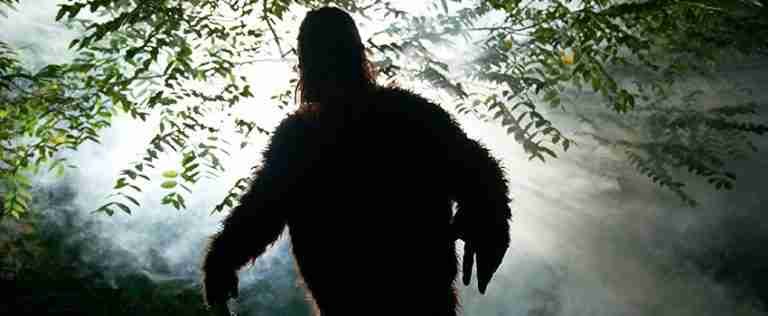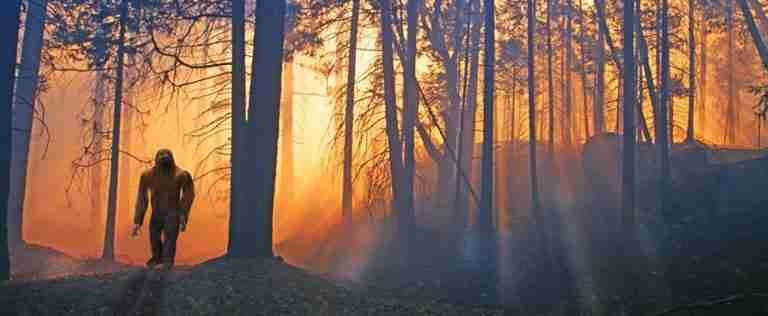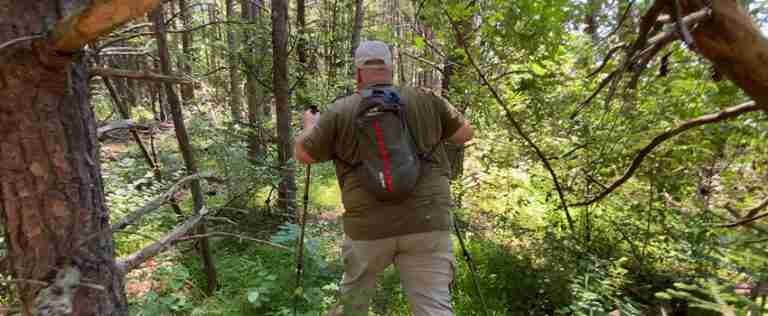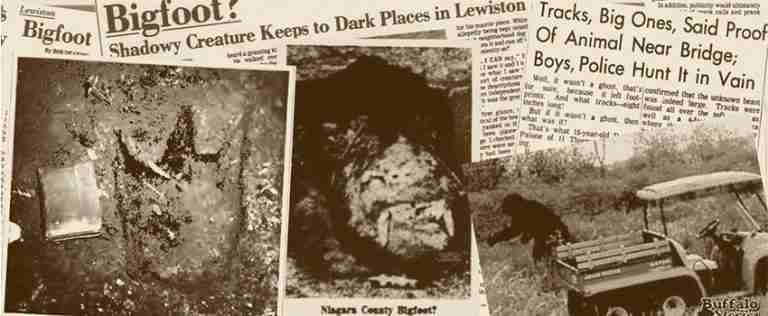Bigfoot in the City: Examining the Controversy Surrounding Urban Sasquatch Sightings

Bigfoot, also known as Sasquatch, is a mysterious creature that is believed to inhabit the forests of the Pacific Northwest region of North America. The creature is described as a large, ape-like being with long arms and shaggy fur, and is known for its strong, musky smell. Despite numerous reported sightings and encounters with Bigfoot, there is still no concrete evidence to prove the creature’s existence.
The enduring mystery surrounding Bigfoot’s existence has captured the imagination of people for decades and has sparked numerous efforts to find evidence of the creature. Many people have searched for Bigfoot in the forests of the Pacific Northwest, using a variety of methods, including collecting hair samples and using thermal imaging cameras.
While most Bigfoot sightings have been reported in rural areas, there have also been a number of reported sightings in urban and suburban areas. The purpose of this article is to explore these sightings and to examine the controversy and debate surrounding them. By examining the reports of Bigfoot sightings in urban areas, we can gain a better understanding of the enduring mystery surrounding Bigfoot and the ongoing debate about its existence.
Bigfoot Sightings In Urban Areas
Bigfoot sightings in urban areas have been reported throughout the years, with people claiming to have seen the creature in cities and suburbs across North America. These sightings have generated much media attention and have sparked debate among Bigfoot researchers and skeptics.
There are a number of challenges associated with conducting research into Bigfoot sightings in urban areas. One of the main challenges is the lack of concrete evidence. In urban areas, it is often difficult to find physical evidence of Bigfoot, such as tracks or hair samples, due to the high level of human activity and the presence of other animals that could potentially leave similar tracks. Additionally, it is difficult to study an unknown species in a highly populated area, as it is difficult to determine the creature’s habits and behavior.
Despite these challenges, there have been a number of reported sightings of Bigfoot in urban areas that have generated significant interest among researchers and the general public. These sightings have contributed to the enduring mystery surrounding Bigfoot and have contributed to the ongoing debate about the creature’s existence.
The Credibility Of Bigfoot Sightings In Urban Areas
Evaluating the authenticity of Bigfoot sightings in urban areas can be challenging due to the lack of concrete evidence and the potential for misidentification or hoaxes. In order to determine the credibility of these sightings, it is important to use scientific method to investigate the claims and to examine physical evidence and eyewitness accounts.
One of the main challenges in evaluating the authenticity of Bigfoot sightings in urban areas is the reliance on anecdotal evidence. While eyewitness accounts can provide valuable information about the circumstances of a sighting, they are not always reliable and can be influenced by a variety of factors, such as the person’s state of mind and the conditions under which the sighting occurred. It is important to consider these factors when evaluating the credibility of a Bigfoot sighting and to look for corroborating evidence, such as physical evidence or eyewitness accounts from multiple people.
In addition to examining eyewitness accounts, it is also important to examine any physical evidence that may be available. This could include tracks, hair samples, or other physical artifacts that may provide clues about the identity of the creature. By using scientific techniques to analyze this evidence, researchers can help to determine the authenticity of a Bigfoot sighting and to provide a more comprehensive understanding of the creature.
Overall, the credibility of Bigfoot sightings in urban areas can be difficult to determine due to the lack of concrete evidence and the potential for misidentification or hoaxes. However, by using scientific method to investigate these claims and by examining physical evidence and eyewitness accounts, it is possible to gain a better understanding of the mystery surrounding Bigfoot and the ongoing debate about its existence.
The Impact Of Bigfoot Sightings In Urban Areas
Bigfoot sightings in urban areas have had a significant impact on the legend of the creature and on public perception of its existence. These sightings have generated much media attention and have sparked debate among researchers and the general public.
The impact of Bigfoot sightings in urban areas on the legend of the creature has been significant, as they have added to the body of evidence and stories surrounding the creature. In some cases, these sightings have been accompanied by physical evidence, such as tracks or hair samples, which have provided additional support for the existence of Bigfoot. In other cases, the sightings have been based on eyewitness accounts, which have contributed to the ongoing debate about the creature’s existence.
In addition to shaping the way that people think about Bigfoot, these sightings have also influenced the public’s interest in the creature. Many people are fascinated by the mystery surrounding Bigfoot and are drawn to the idea of searching for the creature in the hope of finding evidence of its existence. This interest has fueled the ongoing research into Bigfoot and has contributed to the enduring popularity of the creature.
Overall, Bigfoot sightings in urban areas have had a significant impact on the legend of the creature and on public perception of its existence. These sightings have shaped the way that people think about Bigfoot and have influenced the public’s interest in the creature, contributing to the enduring mystery surrounding the Sasquatch.
The Future Of Bigfoot Research In Urban Areas
The future of Bigfoot research in urban areas is an area of ongoing debate among researchers and skeptics. While some people believe that there is still much to be learned about the Sasquatch and the possibility of its existence, others are more skeptical and believe that the debate about Bigfoot’s existence may never be resolved.
Despite these differing views, there is still potential for future research into Bigfoot sightings in urban areas to yield new discoveries and to help to shed more light on the creature. One potential avenue for future research is the development of new technologies and approaches that could be used to study the creature. This could include the use of advanced sensors and cameras that could be used to capture images or sounds of Bigfoot, as well as the use of DNA analysis and other techniques to examine physical evidence.
Another potential area of focus for future research is the examination of eyewitness accounts of Bigfoot sightings in urban areas. By collecting and analyzing these accounts, researchers may be able to gain a better understanding of the creature’s habits and behavior, and potentially identify patterns that could help to establish its existence.
Overall, the future of Bigfoot research in urban areas is uncertain, and it is possible that the debate about the creature’s existence may never be fully resolved. However, with new technologies and approaches being developed and new discoveries being made, there is still the potential for future research to help to shed more light on the enduring mystery surrounding the Sasquatch.
Conclusion: Bigfoot in the City: Examining the Controversy Surrounding Urban Sasquatch Sightings
Bigfoot, also known as Sasquatch, is a mysterious creature that is believed to inhabit the forests of the Pacific Northwest region of North America. Despite numerous reported sightings and encounters with the creature, there is still no concrete evidence to prove its existence.
In this article, we explored the topic of Bigfoot sightings in urban areas and examined the controversy and debate surrounding these sightings. We discussed the challenges of conducting research into these sightings, including the lack of concrete evidence and the difficulty of studying an unknown species in a highly populated area. We also discussed the importance of using scientific method to evaluate the credibility of these sightings and the limitations of relying on anecdotal evidence.
In addition to examining the credibility of Bigfoot sightings in urban areas, we also explored the impact that these sightings have had on the legend of the creature and on public perception of its existence. We discussed how these sightings have shaped the way that people think about Bigfoot and have influenced the public’s interest in the creature, contributing to the enduring mystery surrounding the Sasquatch.
Finally, we looked at the future of Bigfoot research in urban areas and the potential for new discoveries in the field. We discussed the potential for new technologies and approaches to be developed in the field and the possibility of resolving the debate about the creature’s existence.
Overall, the ongoing debate about the existence of Bigfoot in urban areas reflects the enduring mystery surrounding the creature. While there is still much that is unknown about the Sasquatch, the potential for new discoveries in the field suggests that the mystery may one day be solved.






